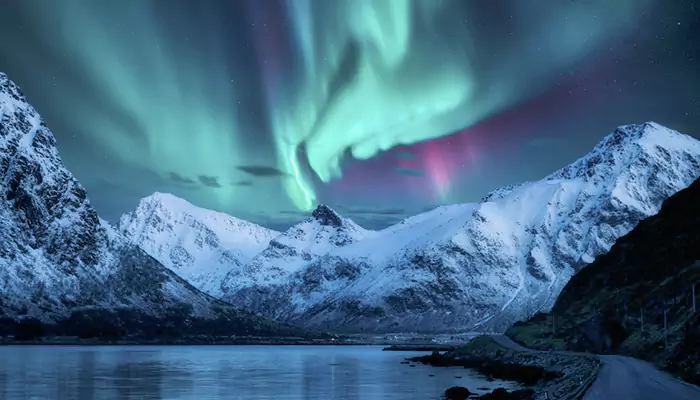Night sky wonders: Uncommon phenomena that’ll take your breath away!
Look up—the universe is revealing its amazing secrets! Don’t miss out!
- Jayati
- 05 June, 2025
- 2 mins ago

Night sky wonders: Uncommon phenomena that’ll take your breath away!
Look up—the universe is revealing its amazing secrets! Don’t miss out!
The night sky has always sparked our curiosity, offering more than just stars and the moon to gaze at. There are rare and amazing sights that can stop you in your tracks. From the colourful glow of the Northern Lights to the brief magic of blue jets, these moments are as beautiful as they are unexpected. Today, we'll take a look at some of the most stunning and rare things you might see when you look up at the sky after dark!
Aurora Borealis (Northern Lights)
The Aurora Borealis is one of nature's most amazing light shows, happening near the polar regions. It’s caused when solar wind meets the Earth’s magnetic field, lighting up the sky with waves of green, pink, and violet. Often spotted in places like Norway, Canada, and Alaska, this stunning display draws in skywatchers and photographers from all over.

Aurora Australis (Southern Lights)
Much like the northern lights, the Aurora Australis lights up the southern skies with its enchanting glow. This rare phenomenon is best viewed from places like Antarctica, New Zealand, and Tasmania. It’s caused by the same process as the Aurora Borealis, with its intensity and colours shifting based on solar activity and atmospheric conditions. For those fortunate enough to see it, witnessing the Aurora Australis is truly an experience of a lifetime!
Gegenschein
Gegenschein, or "counterglow," is a faint brightening of the sky directly opposite the sun, visible only in very dark skies. It’s caused by sunlight reflecting off space dust, making it a rare sight that requires ideal conditions and a keen eye to observe.
Airglow
Airglow is a soft, faint light from Earth’s atmosphere that you can see even when it’s completely dark. It’s created by chemical reactions high up in the atmosphere, where atoms and molecules emit light as they settle back to their normal state. You’ll spot it best in remote, dark spots.
Steve
Steve is a newly found atmospheric phenomenon that looks like a narrow, purplish arc in the night sky. Unlike the Aurora, Steve isn’t caused by solar wind but by fast-moving ions in Earth’s magnetosphere. First spotted by amateur aurora watchers and later confirmed by scientists, Steve shows up in the same places as the Aurora Borealis but is much rarer. Its unique colour and shape make it a really cool and unusual sight!
Blue jets
Blue jets are a type of transient luminous event (TLE) that shoot up from thunderstorm tops into the stratosphere. They usually look bluish and can reach heights of up to 50 kilometers. Unlike sprites and elves, which are tied to positive lightning, blue jets have different causes that are still being studied. They’re pretty rare and tricky to catch since they last just a fraction of a second and are often hidden by the storm’s brightness.
Marfa Lights
The Marfa Lights are mysterious glowing orbs seen near Marfa, Texas. They hover above the desert, changing colours and moving around in strange ways. People have been spotting them for over a century, but no one really knows what causes them! Theories include everything from atmospheric reflections to geological activity.
Belt of Venus
The Belt of Venus is a lovely pinkish or purplish band you can see just above the horizon right after sunset or before sunrise. It happens because sunlight scatters in Earth’s atmosphere. Below it, the sky often looks deeper blue or grey due to Earth’s shadow. It’s best seen in clear, flat places.
Earthshine
Earthshine is the soft glow seen on the dark side of the moon, lit by sunlight reflected from Earth. Most visible when the moon is a thin crescent, it’s best observed during the waxing or waning phases, offering a serene view.
The night sky is just incredible and full of mystery. It really shows how much we don’t know about our huge universe and how much more there is to discover!










